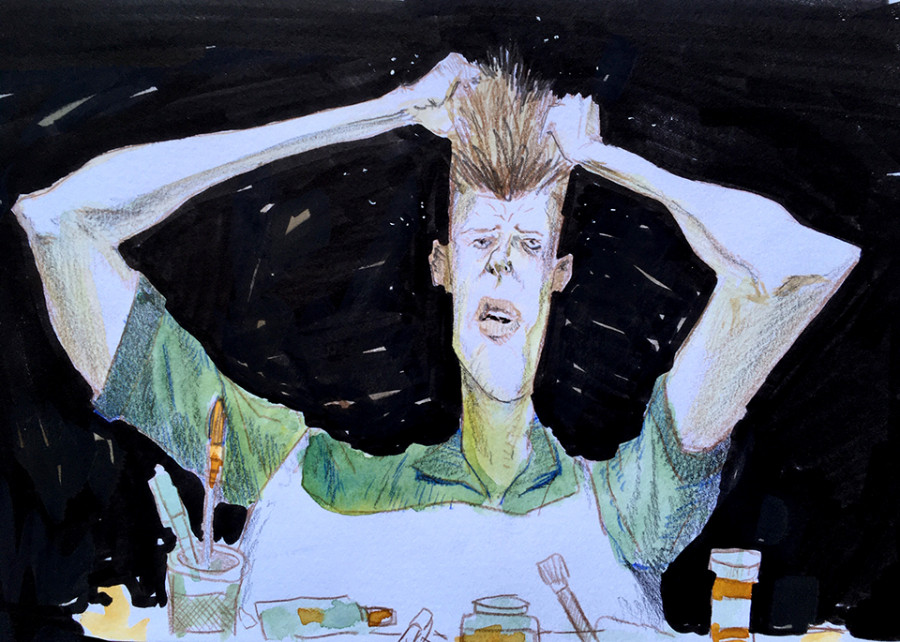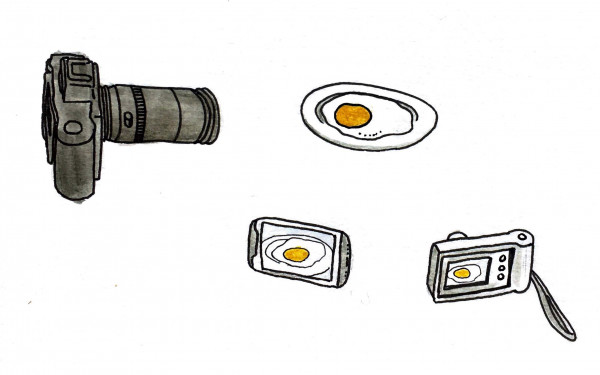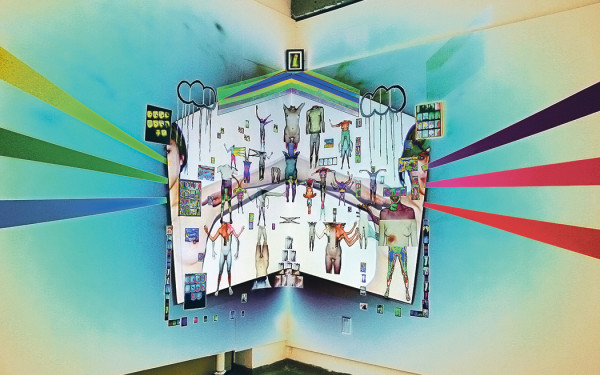It’s Time to Finally Retire the Myth of the Tortured Artist
We Can’t Overcome Mental Health Stigma by Glamourizing Dangerous Tropes
Take it from somebody who knows: improving your mental health is hard work.
From cost-prohibitive medical expenses to ever-present social stigmas, recovery is virtually always a process riddled with barriers. One particular challenge faced by the estimated one in five Canadians struggling with mental illness, however, is rarely discussed—not wanting to recover in the first place.
One of the most popular, tiresome, and dangerous tropes used to romanticize mental illness is the myth of the tortured artist. It’s an idea you’re already familiar with: the Sarah Kanes and Vincent Van Goghs and Robin Williamses of the world were geniuses not in spite of their mental illnesses, but because of them.
Inaccurate tropes like these are still nearly ubiquitous despite the recent explosion in public conversation surrounding mental health. On one hand, our era of social media and awareness campaigns has made living with mental illness at the very least a much less lonely experience than it has been in the past. Many of our grandparents were born into a world that had yet to see the publication of the Diagnostic and Statistical Manual of Mental Disorders, and now Generation Z has created strange, wonderful TikTok subcultures for unfiltered discussions on mental health.
However, this heightened awareness is a double-edged sword in some ways. Ignorance and stigma may not be as prominent among young people, but the glamourization of mental illness certainly is.
It might be easy to scoff at this trope, but it’s even easier to embrace all its trappings without even realizing it. As someone who is both mentally ill and a self-proclaimed artist, for a long time I accepted the idea that pain is some sort of twisted gift for creative souls. I can’t say that these romanticized, inaccurate ideas ever kept me from pursuing treatment or self-growth, but they certainly left me afraid that, as my moods improved, my creative inclinations or, worse yet, my talent, would decrease.
A true child of the Internet, the first communities I felt comfortable sharing my mental health experiences with were social media spaces like Tumblr, and, as a result, I was exposed to a lot of glamourization and misinformation from a young age. I also saw these normalized in the creative communities I was exposed to as a young artist.
As a teenager, when I began taking my interests in writing and theatre seriously, a lot of influential artists such as Sylvia Plath and Sarah Kane were regarded by my peers almost as though they were martyrs for their art. It was easy to accept this as an objective reality, especially when it’s so ingrained into the lore surrounding many of the world’s most well-known artists.
Ultimately, this idea introduced me to two dangerous and nonsensical mindsets: first, that artists who aren’t suffering from mental illness are doomed to a life of mediocrity, and second, that those who are mentally ill must embrace their own suffering to bolster creativity.
If only this idea were in any way reflective of how creativity or mental illness actually work.
Let’s put to rest the idea that the link between artistry and mental illness is a causal one. Yes, there are plenty of artists who struggle with their mental health, and creative expression can certainly be a healthy and therapeutic way to cope with hard times, whether caused by mental illness or otherwise.
That being said, your creativity is not being caused by your pain. Research into human creativity is, for obvious reasons, quite complicated, but current findings suggest that many artists actually thrive when they are able to distance themselves from their sombre, serious consciousnesses.
In 2015, the Santa Fe Institute Working Group released a comprehensive report entitled “How Creativity Works In The Brain.” A key finding indicated that creativity is strengthened when artists find themselves in “flow,” a mental state in which one can “suspend the conscious evaluation of their output and simply play.”
In fact, many common symptoms of mental illness, including but not limited to inattention, chronic fatigue, anxiety, and psychosis, can actually keep artists from reaching their full potential. If we can accept that mental illness could prevent a person from being able to get out of bed or make rational decisions, we should be able to accept that it could make it difficult to pick up a paintbrush or a guitar.
Your creativity is not being caused by your pain.
It can be painful to watch the publicized suicides and overdoses of our favourite artists and wonder whether there was more that could have been done to help them. The belief that emotional anguish is an intrinsic trait of the world’s greatest minds allows us to view real-life tragedies in an almost spiritual manner. For these artists, suffering is fate, and there’s no sense searching for accountability when it comes to fate.
Artists can also exempt themselves from responsibility through the tortured artist trope—especially privileged artists. This insufferable concept offers artists a false choice between the slow, nebulous process of healing and the promise of creative fulfillment, the latter of which is obviously more appealing.
Fortunately, I’ve since been able to find healthier communities and support systems and unlearn the idea of the tortured artist.
Nowadays, I see art as something that, at the best of times, can be a therapeutic outlet. It is not a substitute for medical treatment or lifestyle changes, and it’s not something that can make a bad situation go away—but it can make a bad situation feel a little bit better, and there’s value in that.
Of course, this is where capitalism comes in.
The connection here is simple—art can rarely be both a psychological reprieve and a form of labour, and in our current burnout culture, the latter is unavoidable. We live in a society that expects us to monetize everything, to view our most precious creations and life-altering breakthroughs as potential revenue streams. Art under capitalism is labour, and labour is something to exhaust, not enlighten.
In many ways, the trope of the tortured artist can be used to masquerade exploitation within artistic industries. It has tragically bred a generation of artists who want to be miserable but successful, and there are powerful people and institutions who can profit from this.
Alo Azimov, a Montreal-based storyteller, comedian, and producer understands this reality all too well. They said that in many cases, industry professionals will discourage artists from seeking help for mental health afflictions, especially in cases where it could impede their ability to make money.
“If there’s someone bringing in money, […] there’s always a circle of enablers,” Azimov said of their experiences in the Montreal underground comedy and theatre scenes. “When you’re in it, you don’t realize until you’re out of it what was going wrong.”
Enablers certainly pose a risk to artists in both professional and underground scenes, but there are also outright abusers who extend the trope of the tortured artist beyond their personal experiences.
Many acclaimed (and predominantly male) filmmakers such as Quentin Tarantino, David O. Russell, and Alfred Hitchcock have been accused of behaviour that, at best, shows little regard for the safety of their collaborators and at worst, is verbally and physically abusive in nature. As audiences, we have granted leniency to “genius” artists to the point that we often treat their abuse as integral to their artistic process. We rarely extend this leeway to women, queer, and racialized artists.
Overall, the tortured artist isn’t just a capitalistic invention, it’s also a patriarchal one, something that’s been used to gloss over unacceptable behaviour long before the #MeToo movement was a blip on Hollywood’s radar.
Obviously, this trope is more than just a public misconception. It’s an idea that’s systemic and has impacted both individual artists and entire industries. Fortunately, many artists are hopeful that the myth can be killed by creating healthier, more supportive communities, Azimov concluded.
Azimov’s career as a performer began in Montreal’s club scene, where they opened up about their experiences with mental illness and suicidality during sets. Now, as a producer, they have created shows specifically focused on mental health, implemented support groups for performers, and generally seek to book underrepresented artists in shows whenever possible.
On a personal level, they say that setting boundaries has been key to surviving in a demanding and fast-paced industry.
“Don’t be afraid to say no,” advised Azimov. “That is going to help you not burn out. Remember that no one has a right to your space, your time, your body.”
Of course, artists can certainly look to their personal experiences with mental illness or adversity without contributing to harmful stereotypes.
It’s absolutely true that retiring mischaracterizations of mental illness does not mean that artists should be silent about their experiences, but rather be mindful of their approach. The tortured artist is an idea that’s long been ingrained in our collective psyche, but it’s important to remember that we always have the power to replace a bad idea with a better one.
Instead of viewing recovery as a creativity killer, I try to remind myself that my experiences with mental health treatment have made me a better friend, a better student, and yes, a better artist.
If there’s one thing that artists can do as a community to finally retire the trope of the tortured artist, it’s to remind each other that getting better might be tough, but we end up better for it.


_600_832_s.png)



5__600_375_90_s_c1.jpg)